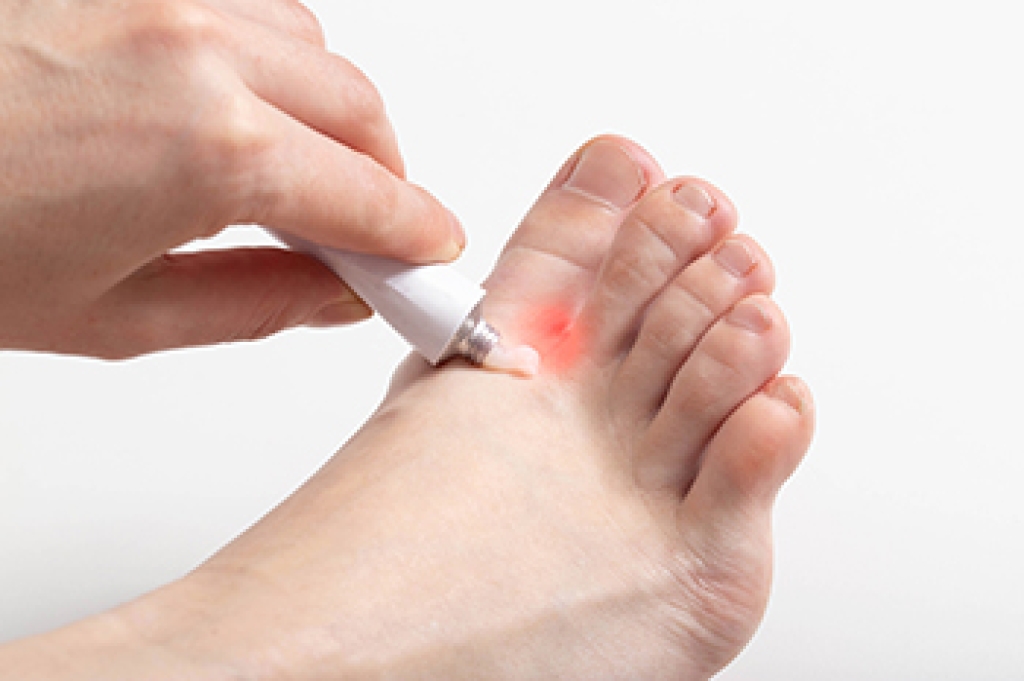
Ringworm of the foot is also known as athlete’s foot. The medical term is called tinea pedis, and it is considered to be contagious. It is a common foot condition, affecting approximately 25 percent of the population. The fungus that causes this foot condition lives in warm and moist environments, such as shower room floors, public swimming pools, and surrounding areas. The noticeable symptoms that most people notice with athlete’s foot can consist of itchy skin between the toes, and the bottom of the foot may be red and scaly. In severe cases, small blisters may develop, and prompt medical attention is often sought for relief. Athlete’s foot may lead to developing cracked heels, or fissures, which may bleed or become infected. Successful preventive measures can include wearing appropriate shoes such as flip flops or water shoes while in these types of areas. Additionally, it is helpful to refrain from sharing shoes, socks, or towels, and it may help to wear shoes that are made with breathable materials. If you have developed athlete's foot, it is suggested that you consult with a chiropodist who can offer you effective treatment options.
Athlete’s foot can be uncomfortable and unsightly. To learn more about preventing and treating this condition, please consult with one of the specialists from Thornhill Foot Clinic. Our chiropodists will assess your condition and provide you with quality foot and ankle treatment.
What Is Athlete’s Foot?
Athlete’s foot refers to an infection of the skin on the feet that is caused by a fungus. This fungus is contagious and thrives in warm and moist environments. It is often spread in common areas such as public pools, locker rooms, and showers. It can also spread when sharing personal items, like shoes or towels, with an infected person.
Symptoms
The symptoms of athlete’s foot may include:
- Itching, stinging, or burning of the skin on the feet
- Cracking or peeling skin, especially between the toes and on the soles of the feet
- Scaly, red rash on the foot
- Blisters
- Foul odor
Treatment
Treatment for athlete’s foot typically involves using over-the-counter topical antifungal medications on the feet. When over-the-counter options are ineffective, you may need to take prescription oral medications or topical antifungal drugs, or a combination of both.
Prevention
Preventing athlete’s foot places an emphasis on good foot hygiene practices.
You can prevent athlete’s foot by:
- Washing and drying your feet thoroughly every day
- Wearing shoes when walking in public areas
- Not sharing personal items, like shoes or socks, with others
- Wearing shoes and socks made out of breathable materials
If you have any questions, please feel free to contact our office located in . We offer the newest diagnostic and treatment technologies for all your foot care needs.
